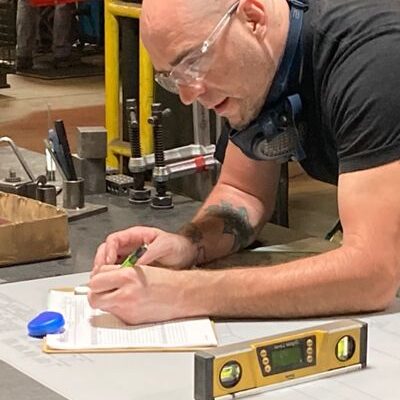Precision Bending News
One of the most important parts of the process of custom metal bending is the selection of the right material. It is as crucial as the bending process itself.
Precision Bending, a leader in the field, emphasizes the importance of material selection for the success of any custom bending project. We take a look at why material choice is vital and how it impacts the outcome of a bending project.
One of the most important parts of the process of custom metal bending is the selection of the right material. It is as crucial as the bending process itself.
Precision Bending, a leader in the field, emphasizes the importance of material selection for the success of any custom bending project. We take a look at why material choice is vital and how it impacts the outcome of a bending project.
One of the most important parts of the process of custom metal bending is the selection of the right material. It is as crucial as the bending process itself.
Precision Bending, a leader in the field, emphasizes the importance of material selection for the success of any custom bending project. We take a look at why material choice is vital and how it impacts the outcome of a bending project.
Precision Bending is a premier custom bending manufacturer. We work with customers to design and fulfill custom bent tubing. The process for engineering / designing involves several steps to ensure a successful result that fulfills complication specification.
We have outlined several stages of process from inception to delivery
We have already discussed the EPA’s new emission standards, which dictate that manufacturers must product engines that help control exhaust emissions. We are now in the final stage of the requirement, Tier 4 Final Standards, which mandates that all diesel engines that are put into service from 2015 and beyond must adhere to the EPA’s requirements.
Have you heard of VMI? This is a forward thinking trend that’s a change from ‘manufacturing as usual.’ VMI stands for Vendor Managed Inventory which is a streamlined way for businesses to manage inventory and fulfill orders. At Precision Bending Technology, we take every opportunity to offer our customers the easiest way to order and receive the parts they need. With VMI, that process is made even easier.
As providers of custom tube solutions and precision tube bending for all types of industries, we are optimistic about what 20202 has in store for everyone in manufacturing. We look forward to continuing to work with current customers from the oil and gas, HVAC, sanitary & food equipment, construction, and other industries.
This isn’t a life or death decision but one that is important to those of us working with metal piping. Piping is a vital component in almost all manufacturing industries. Whether it is agriculture, food processing, construction equipment, or the aerospace industry, metal piping and tubing is almost always required to transport fluids or gases through a mechanical or processing system.
At Stam, Inc.*, our main goal is to provide quality custom tubing solutions for companies working in a variety of industries. Now, in our 40th year of operation, it’s clear that we continue to meet this goal while also leaving room for growth in other areas. In addition to maintaining an ISO9001:2008 certification, we also follow emerging trends to remain competitive in an evolving marketplace.

